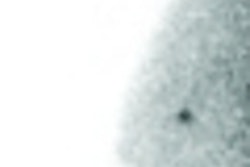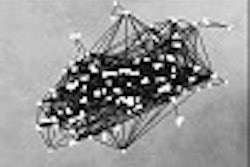Despite high-profile promotions for breast cancer screening, few women in the U.S. actually undergo mammography every year, according to researchers from Massachusetts General Hospital in Boston. The group looked at nearly two decade's worth of screening records for more than 70,000 women at MGH and found that only 6% turned up on an annual basis. The researchers published their results in Cancer, a journal of the American Cancer Society.
Lead author James Michaelson, Ph.D., and colleagues stated that they observed "a level of screening use that was disappointingly low, with potentially negative health-related consequences among women across categories defined by racial, ethnic, socioeconomic, and geographic characteristics; insurance status; language; age; medical history; and previous screening use" (Cancer online, June 21, 2004).
Michaelson is an assistant professor of pathology at MGH and Harvard Medical School. His co-authors included Dr. Daniel Kopans, Elkan Halpern, Ph.D., and Richard Moore from the department of radiology.
For this study, mammography use was assessed in 72,417 women, who received a total of 254,818 screening mammograms at the MGH Avon Comprehensive Breast Center between 1985 and 2002. A computer simulation of breast carcinoma growth, spread, and detection of breast carcinoma was used to estimate the likely health consequences of various types of screening use.
They found that only 6% of women who received a mammogram in 1992 received all annual mammograms over the next 10 years. The mean number of mammograms received during this period was 5.06, which was 51% less than the number stated in the American Cancer Society's guidelines for screening.
Lower levels of use were found for women with low income, no health insurance, or who did not speak English. Lower levels of use also were observed among women receiving their first mammogram. Higher compliance rates were found with women ages 55-65 years and women with a history of breast carcinoma.
"Computer simulation results indicate that this underutilization of screening should result in higher mortality levels," the authors wrote. Michaelson suggested that women's health specialists needed to consider sending more consistent reminders to women about the importance of annual screening (Associated Press, June 21, 2004).
Other reasons that may affect non-compliance include long wait times and a shortage of breast imaging specialists -- two issues that could be solved by authorizing non-physicians to interpret mammograms, according to a recent report by the Institute of Medicine.
Discomfort caused by compression during the exam has also been reported by patients, with some women citing it as a major barrier to compliance (Archives of Internal Medicine, April 14, 2003, Vol. 163:7, pp. 833-886).
A recent study by Dr. László Tabár and colleagues at Falun Central Hospital in Sweden found that using a radiolucent cushion could significantly reduce pain caused by compression, without any clinically significant change in compression force, radiation dose values, or image quality (Acta Radiologica, April 2004, Vol. 45:2, pp. 154-158).
Other research has indicated that taking a "less is more" approach to cancer screening may do the trick, such as using less compression, or reporting test results in a shorter time period, to alleviate patient anxiety (Australasian Radiology, June 2003, Vol. 47:2, pp. 121-126; Journal of the National Cancer Institute, April 7, 2004, Vol. 96:7, pp. 529-538).
By Shalmali PalAuntMinnie.com staff writer
June 23, 2004
Related Reading
ACR rejects Institute of Medicine's mammo tech proposal, June 15, 2004
Bollywood-style song inspires U.K. women to get mammograms, February 10, 2004
Bringing residents back to breast imaging: An insider’s perspective, October 16, 2003
Mammography positioning tool improves image, patient comfort, November 29, 2001
Study shows cushion lessens pain during mammo exam, November 27, 2001
Copyright © 2004 AuntMinnie.com



















